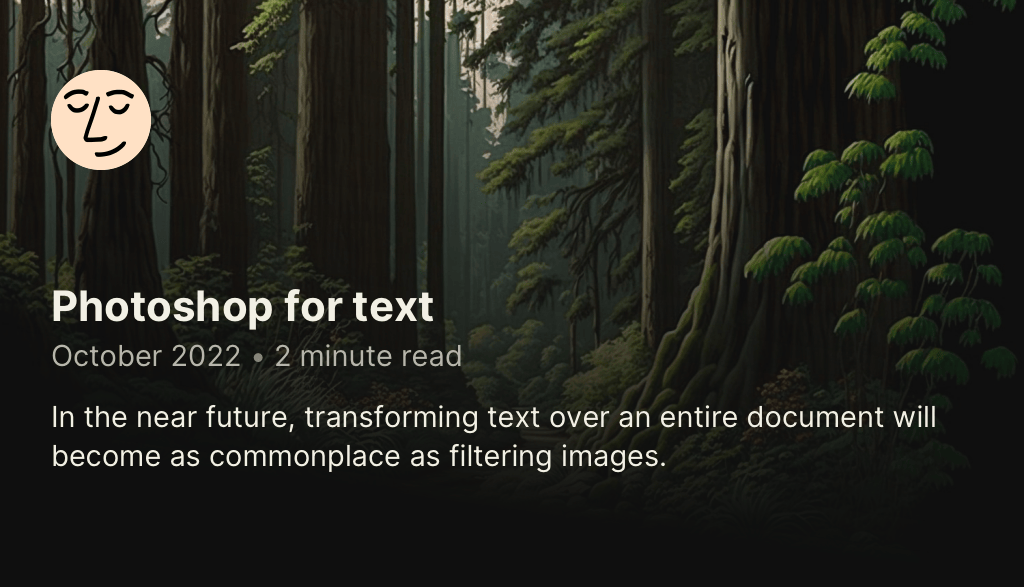
Photoshop for text

Take the humble “document” as an example. For decades, document editing programs like word processors effectively emulated a printed sheet of paper, onto which the user typed with an emulated typewriter. Other software tools like spreadsheets did better, managing to escape complete skeuomorphism in favor of an infinite canvas. Notion is another goo... See more
Linus Lee • How we create | linus.coffee
It can be translated. It can be produced and consumed at variable speeds. It is asynchronous. It can be compared, diffed, clustered, corrected, summarized and filtered algorithmically. It permits multiparty editing. It permits branching conversations, lurking, annotation, quoting, reviewing, summarizing, structured responses, exegesis, even fan fic... See more
orders of magnitude • Always Bet on Text
Content has become like clay. LLMs can remix it, summarize it, elaborate on it, hallucinate it, combine it with other content, freely transform it between text, audio, image, and back again. It seems we have achieved a kind of information post-scarcity. A regime of radical overproduction. A content singularity. How will this change things?
Gordon Brander • LLMs and information post-scarcity
Writing gave words permanence. Typewriters reduced the friction between having a thought and transferring it onto a page. Computers reduced the cost of editing thoughts after you typed them. The internet made it possible to send your words anywhere, instantly, for zero cost. And now AI will help you think through ideas more completely as you type t... See more